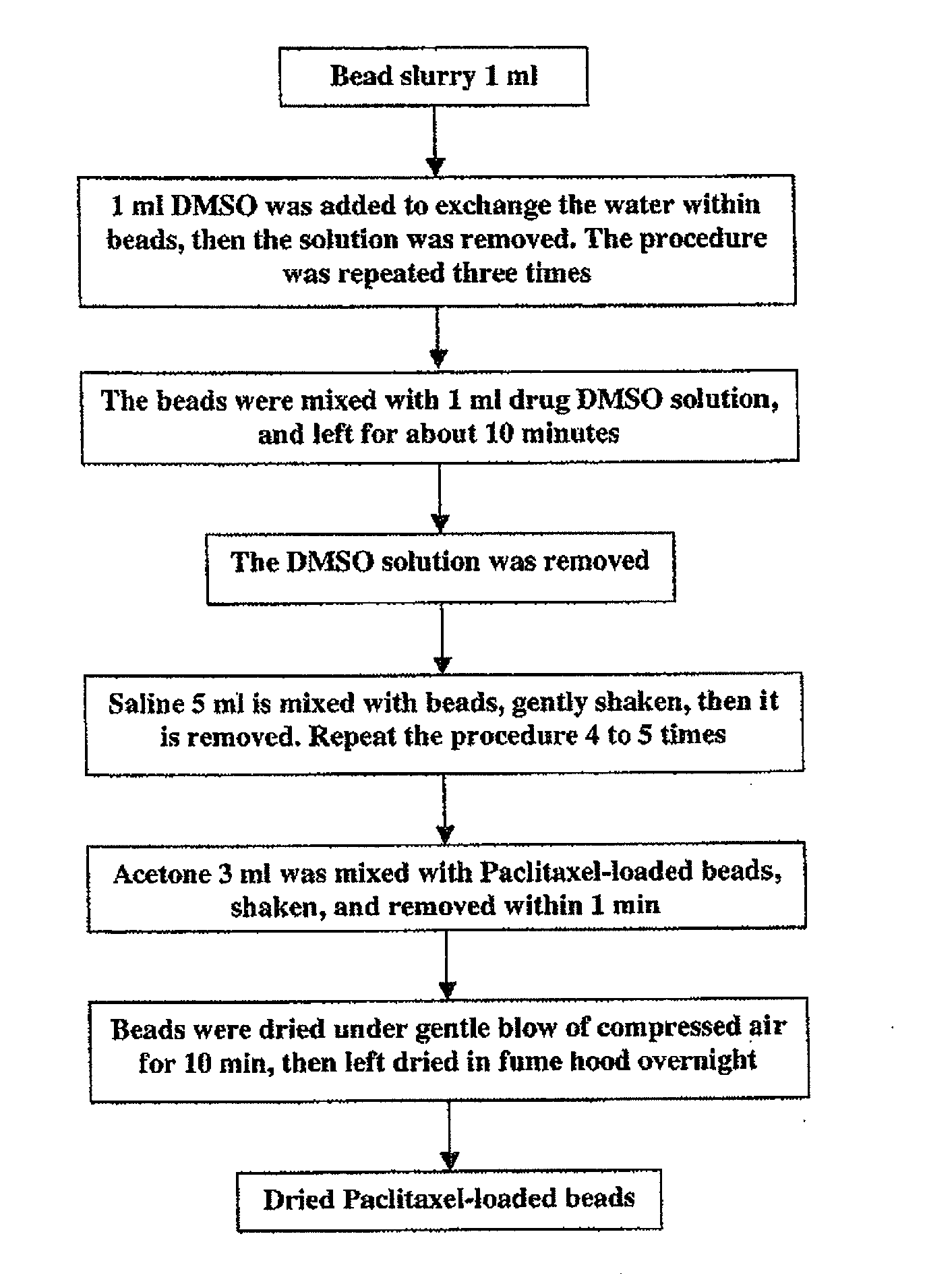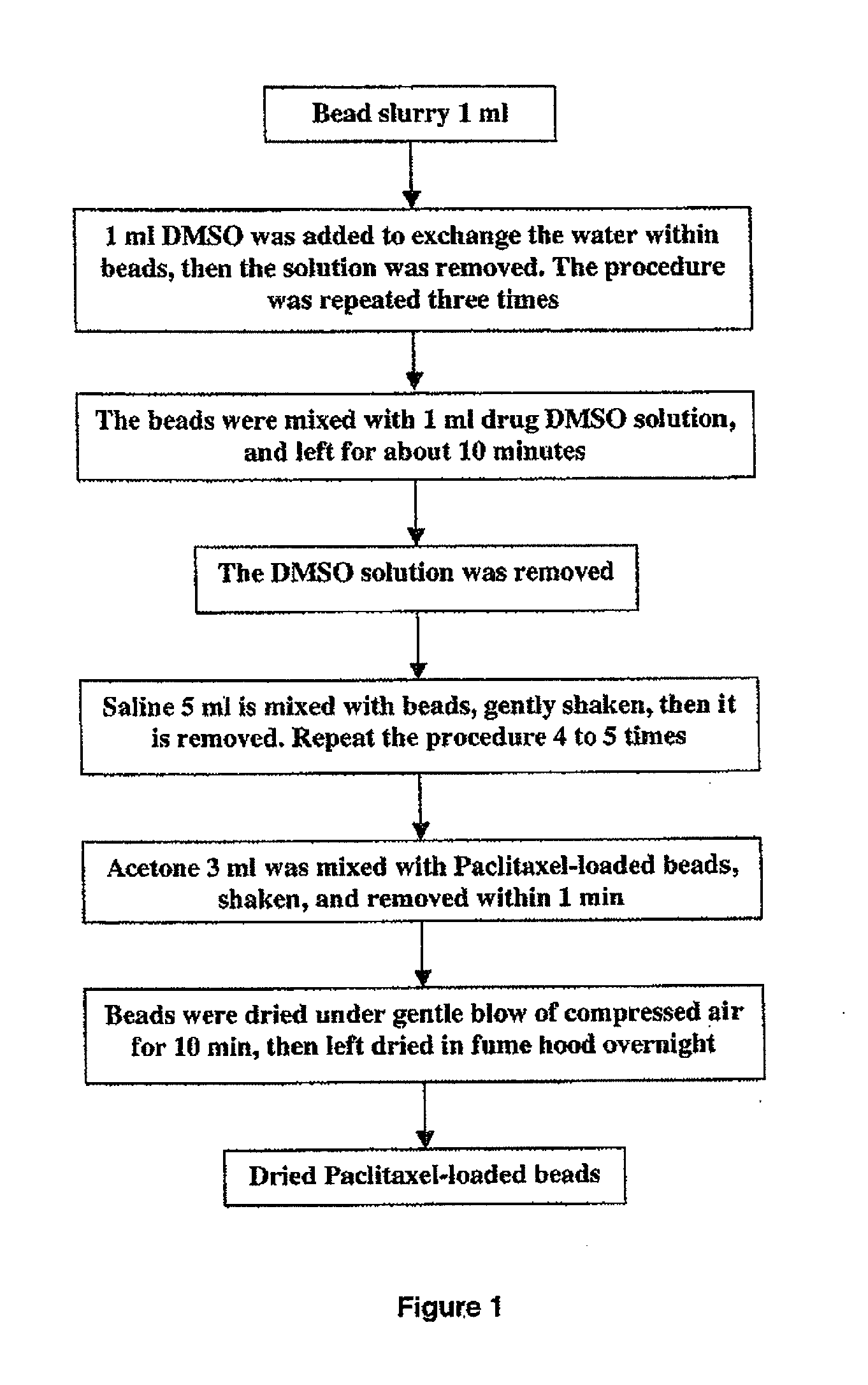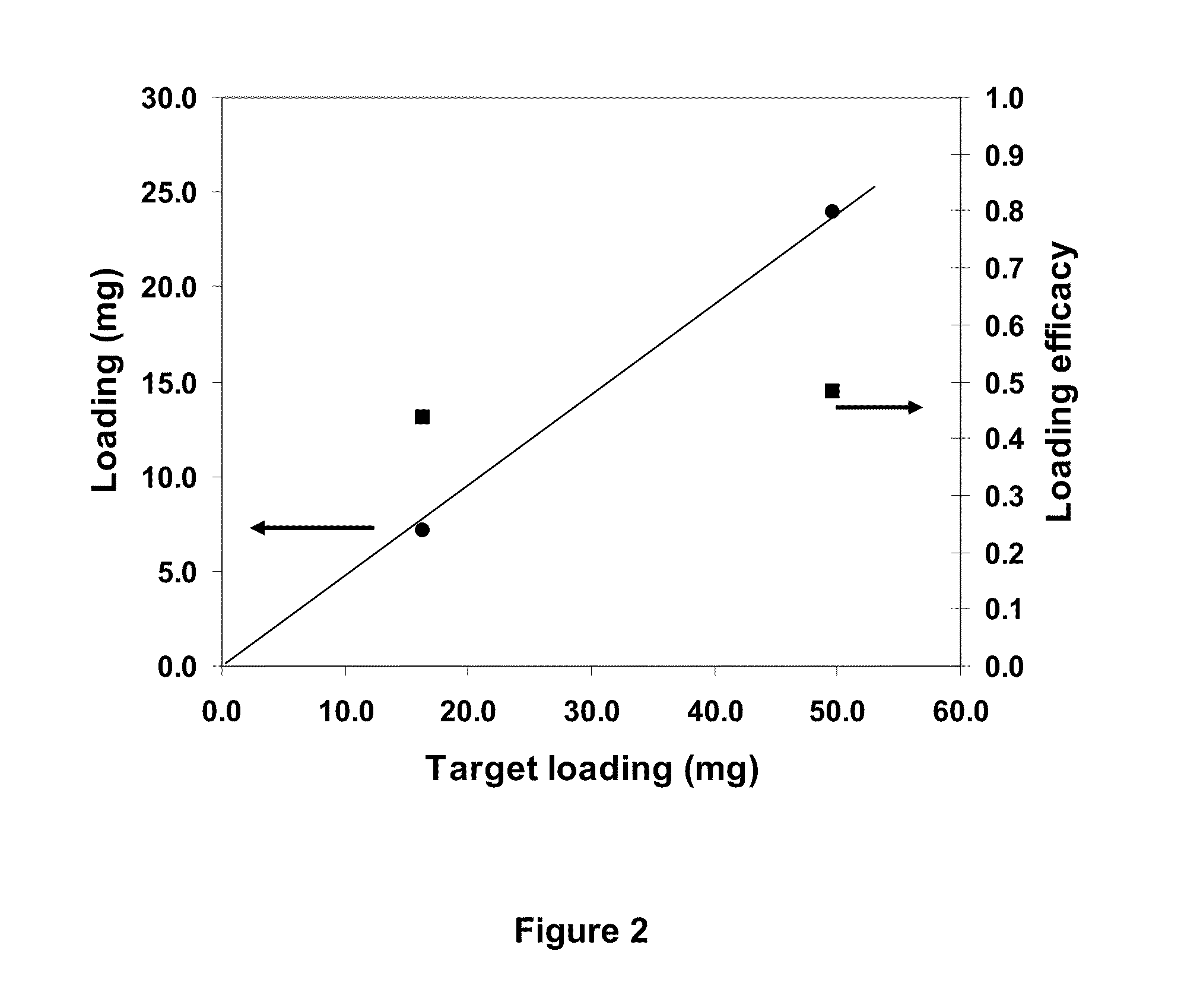Loading of hydrophobic drugs into hydrophilic polymer delivery systems
a polymer and hydrophilic technology, applied in the direction of biocide, colloidal chemistry, drug compositions, etc., can solve the problems of poor compatibility between hydrophobic and hydrophobic, discoloration of hydrogel microspheres, and disruption of mitosis, and achieve the effect of less swelling
- Summary
- Abstract
- Description
- Claims
- Application Information
AI Technical Summary
Benefits of technology
Problems solved by technology
Method used
Image
Examples
example 1
[0093]Preparation of paclitaxel loaded microspheres is as described in WO2004 / 000548 Example 1, “high AMPS” product. Briefly, an aqueous mixture of polyvinyl alcohol macromer having acetal-linked ethylenically unsaturated groups and 2-acrylamido-2-methyl-propane sulphonate in a weight ratio of about 1:1 is suspended in a continuous phase of butyl acetate containing cellulose acetate butyrate stabiliser with agitator and is radically polymerised using redox initiation to form beads, which are washed, dyed and sieved into size fractions including the 300-500 μm, 500-700 μm and 700-900 μm fractions used in subsequent Examples. The equilibrium water content of the microspheres is 94 to 95% by weight.
[0094]The loading procedure is shown schematically in FIG. 1. First, the aqueous packing solution of 1 ml beads was removed from the vial, and the beads were fully mixed with 1 ml DMSO by gently shaking. After 5 minutes the DMSO / water mixture was removed and 1 ml fresh DMSO was added again. ...
example 2
Preparation of Rapamycin-Loaded Microspheres
[0102]In this Example the microspheres were 300-500 μm PVA beads (as used in Example 1). The loading procedure is shown in FIG. 5. First, the aqueous packing solution of 1 ml beads was removed, and the beads were fully mixed with 1 ml DMSO by gently shaking. After 5 minutes the DMSO was removed and 1 ml fresh DMSO was added again. The procedure was repeated three times, and a bead slurry was finally obtained by removing DMSO.
[0103]Rapamycin powder (16.4 mg) was dissolved in 1 ml DMSO in a vial. Subsequently, the pre-washed water-depleted microspheres were mixed with the rapamycin solution, and gently shaken for 10 minutes to enable the drug to completely diffuse into the beads. After this the DMSO solution was removed, 5 ml of saline was added to the beads and the mixture was agitated. Rapamycin precipitates were observed in solution, and the blue beads became white in colour due to the solubility decrease of rapamycin within the rehydrate...
example 3
Preparation of Dexamethasone-Loaded Microspheres
[0107]Following the procedure in Example 2 and FIG. 5, dexamethasone was loaded into PVA beads (300-500 μm) as used in Example 1. First, the aqueous packing solution of 1 ml beads was removed, and the beads were fully mixed with 1 ml DMSO by gently shaking. After 5 minutes the DMSO was removed and 1 ml fresh DMSO was added again. The procedure was repeated three times, and a bead slurry was finally obtained by removing DMSO.
[0108]Dexamethasone powder (139.6 mg) was dissolved in 1 ml DMSO in a vial. The solubility of dexamethasone in DMSO at room temp is about 60 g / l, and it is practically insoluble in water. Subsequently, the pre-washed water-depleted microspheres were mixed with the dexamethasone solution, and gently shaken for 10 minutes to enable the drug to completely diffuse into the beads. After this the DMSO solution was removed, 5 ml saline was added to the beads and the mixture was agitated. Dexamethasone precipitates were obs...
PUM
| Property | Measurement | Unit |
|---|---|---|
| Length | aaaaa | aaaaa |
| Density | aaaaa | aaaaa |
| Temperature | aaaaa | aaaaa |
Abstract
Description
Claims
Application Information
 Login to View More
Login to View More - R&D
- Intellectual Property
- Life Sciences
- Materials
- Tech Scout
- Unparalleled Data Quality
- Higher Quality Content
- 60% Fewer Hallucinations
Browse by: Latest US Patents, China's latest patents, Technical Efficacy Thesaurus, Application Domain, Technology Topic, Popular Technical Reports.
© 2025 PatSnap. All rights reserved.Legal|Privacy policy|Modern Slavery Act Transparency Statement|Sitemap|About US| Contact US: help@patsnap.com



